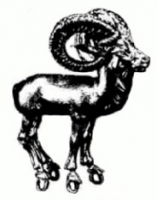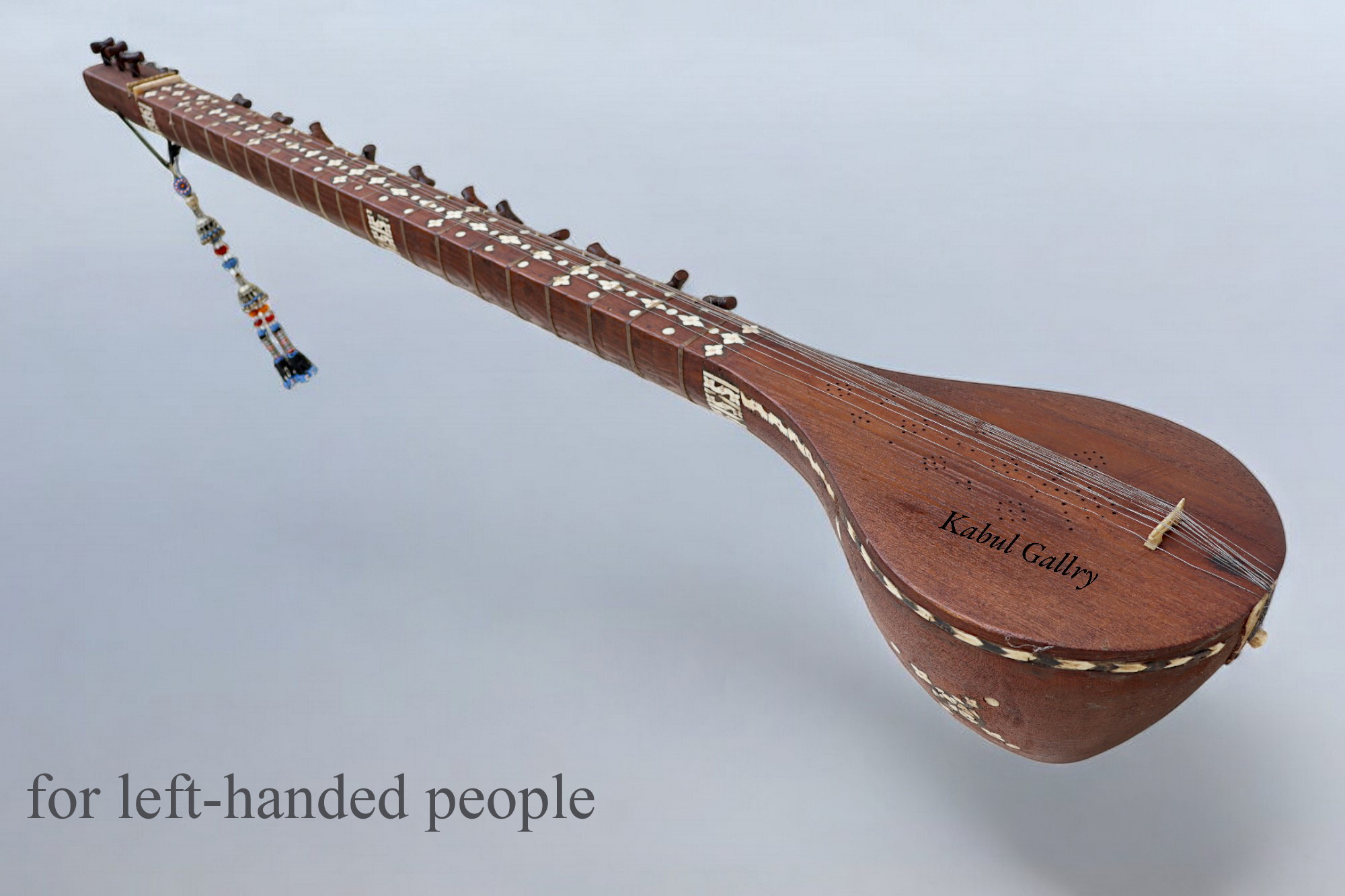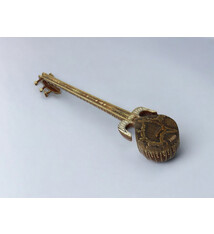- LIEFERUNG AM NÄCHSTEN TAG
- versandkostenfrei innerhalb des deutschen Festlands
- KOSTENLOSE RÜCKSENDUNG
- 30 Tage Rückgabe
antique afghan folk music instrument Tambur Tanbur tanboor from Afghanaistan with mother-of-pearl and bone inlaid for left-handed people تنبور No:25
| Availability: | In stock |
antique original afghan folk music instrument Tambur Tanbur tanboor from Afghanaistan with bone inlaid (for left-handed people) تنبور
The tanbur is played in Northern Afghanistan from Kabul to Herat and Maza-E-Shariff amongst the Uzbeks and Tajiks in small ensembles or solo.
length 55,9 " (142 cm) ,Width about 9,8" ( 25 cm) and Height approx 7,8" ( 20 cm)
weight: 2100 Gramm
The body of the tanbur is made from a a hollowed out piece of mulberry wood, and often smaller than the dutar. The front is made from mulberry.
The long neck (mulberry or apricot) is also the pegbox. The frets made of thick gut string are tied-on (3 windings) in some diatonic scale. At the left side of the neck is a groove to ease making the knots in the frets. There are 4 flat T-shaped friction pegs, two on the front, and two on the left. The 4 metal strings run over a small loose bridge to a bit of wood at the edge of the body. The first two strings are tuned the same, but they are so far apart that only the first one is fingered.
The neck is often highly decorated with inlay bone (or white plastic nowadays) in squares, triangles, lines. The top of the back has triangle inlays, together forming a kind of windrose. The soundholes are a few drilled holes in a geometrical design. The entire instrument is varnished.
The tanbur is always played with a wire plectrum on the index-finger, similar to the Indian sitar plectrum (mizrab), so you can pick forwards and backwards. The left hand plays mainly on the first course - the others are used as drones.
The music is usually instrumental, but the tanbur is also used to accompany singing.
If you have further questions about this article, we are at your disposal! We will send you more pictures if needed upon request!






















